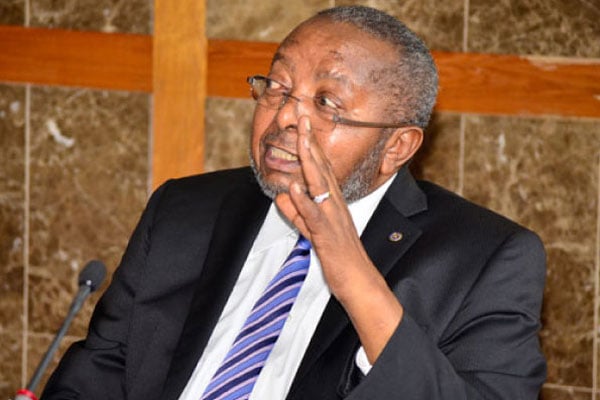Prime
Govt registers revenue shortfall of Shs1.78 trillion in eight months

BoU Governor Emmanuel Tumusiime-Mutebile
What you need to know:
- Relative to the approved target, Bank of Uganda says total Government revenue, including grants in the eight months of FY 2020/21 amounted to Shs13.924 trillion which reflects a surplus of Shs448.8 billion
The new monetary policy report by the central bank has revealed that government fiscal operations have been constrained by revenue shortfalls, slow execution of infrastructural projects and lower-than-target domestic and external financing in the last eight months in this fiscal year ending on June 30, 2021.
In the monetary policy report, for April 2021, released in this month of May, Bank of Uganda said relative to the Uganda Revenue Authority (URA) targets, net tax collections for July-March 2021 were Shs1.78 trillion short of Shs16.1 trillion targets.
This was largely due to underperformance in both domestic and international trade taxes but it still grew by 6.7 percent compared to the same period in FY 2019/20, which registered slower growth due to tight fiscal operation resulting in slower growth in domestic revenue collection.
Relative to the approved target, Bank of Uganda says total Government revenue, including grants in the eight months of FY 2020/21 amounted to Shs13.924 trillion which reflects a surplus of Shs448.8 billion.
“This was largely due to the revenue target for 2020/21 being revised downwards on account of the adverse effects of the coronavirus pandemic on economic activity. Therefore, the over performance of revenues relative to the target may not necessarily mean higher revenue collections due to improved economic fundamentals,” said the Bank of Uganda.
Bank of Uganda says over the same period, grant receipts amounted to Shs.1.219 trillion, which was Shs93.3 billion lower than in the budget, while domestic revenue was Shs12.704 trillion, which was Shs541 billion higher than the amounts in the approved budget.
Total government expenditure for the eight months of FY 2020/21 amounted to Shs23.201 trillion, which indicates that there was Shs3.442 trillion lower than the programmed expenditure mainly due to an underperformance in development expenditure.
The shortfall in development expenditure is attributed to slow absorption by some government projects. Current expenditure and net lending were also lower than programmed by Shs.391.2 billion and Shs354.4 billion, while domestic arrears over-performed by Shs312.0 billion due to the Government’s deliberate response to clear more arrears than was budgeted for to support the recovery in economic following the impact of Covid-19 on economic activity.
The Bank of Uganda stated in the report that on an annual basis, total government expenditure grew by 17.5 per cent, but there was still a resultant fiscal deficit of Shs.9.276 trillion which was lower than programmed expenditure by Shs3.891 trillion, and it is partly as a result of the underperformance of development expenditure.
The Central Bank further revealed that the deficit was largely financed by domestic sources, which subsequently led to an increase in the stock of domestic debt by 29.0 per cent to Shs23.545 trillion at end of February 2021.
On the current stock of public debt; the Bank of Uganda says in Nominal terms total public debt grew by 16.5 per cent to Shs69.7 trillion in the same period. However, it expressed confidence that Uganda’s total public debt remains sustainable in the medium to long-term.
“Indeed, nominal debt is projected to increase from 41.0 per cent of GDP in FY 2019/20 to 51.9 percent of GDP in FY 2022/23 and to decline thereafter. However, debt service to domestic revenue ratio is projected to increase to 27 per cent in FY2020/21 compared to 22 per cent in FY 2019/20 and is projected to average 30 percent in the coming two financial years. The increase in debt service to domestic revenue is likely to crowd-out other priority expenditures,” Bank of Uganda explained.



